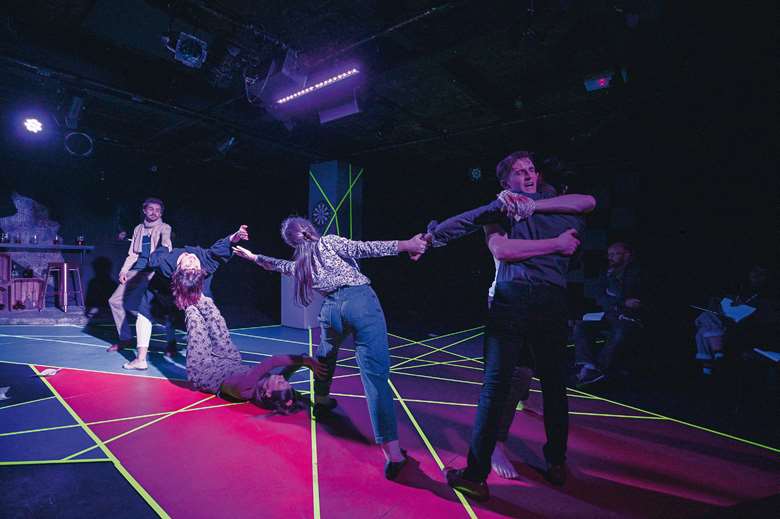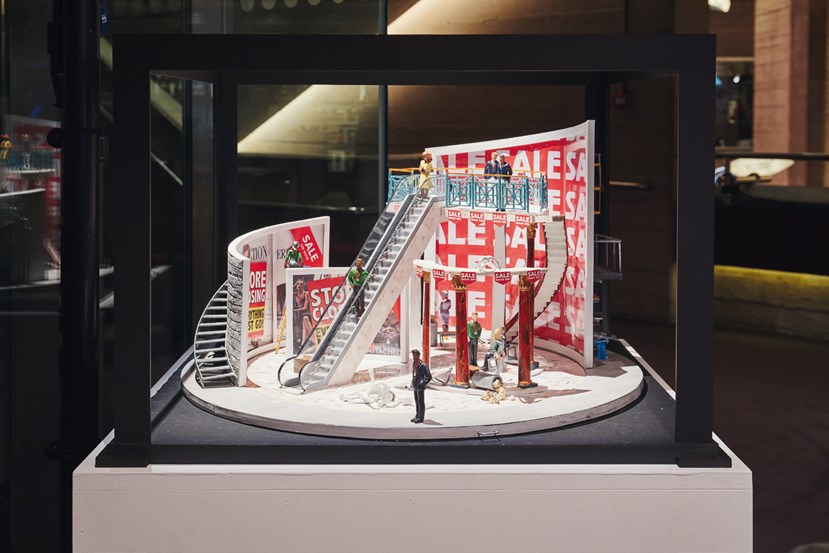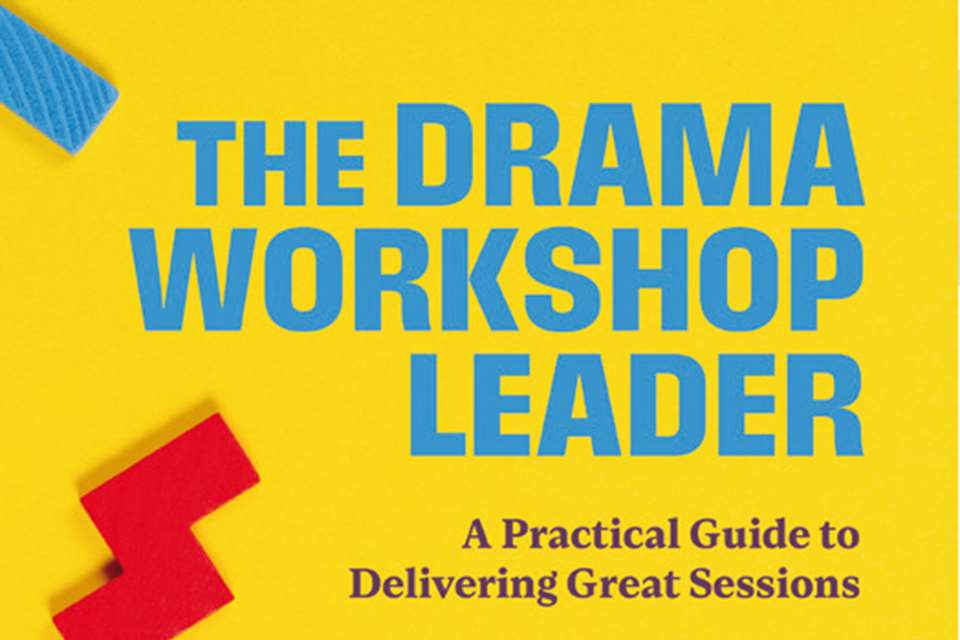Taking up space: Linbury Prize for Stage Design
Rebecca Pizzey
Thursday, February 1, 2024
As an exhibition of the UK's top theatre design talent opens, Rebecca Pizzey meets a judge and a recipient of the Linbury Prize for Stage Design 2023 to find out more.

Kirsten McTernan
As one of the recipients of the Linbury Prize – the only nationwide award for stage design – Ola Kłos is reflecting on what makes ‘good’ theatre and performance design. ‘You should talk about yourself as a person and about what makes you, you,’ she says. ‘The best designs are the ones done by people with a wide range of interests.’
Founded in 1987 by Anya Sainsbury, the Linbury Prize opens every two years to graduating designers – and this year, for the first time, it was also open to those who could demonstrate equivalent skills and experience, without the need for a degree. It offers 12 recipients the opportunity to work with some of the UK's leading theatre, opera and design companies, and to have their work exhibited at the National Theatre. So far it has helped to launch the careers of over 200 artists.
Routes into the industry
A graduate of the MA in Design for Performance at the Royal Welsh College in Cardiff, and the BA in Interior and Spatial Design at Buckinghamshire University, Kłos has been interested in theatre since she was a child. ‘But I left it behind as an interest in space was brought into my life – how you can design space and how fun it can be,’ she explains of her journey into theatre and stage design.
Georgia Lowe, a former recipient for the prize, was on the judging panel for this year's cohort. ‘I always knew I wanted to work in theatre, but I didn't know about design as an option or career. I approached it from an acting angle and quickly found myself working as more of a dramaturg, director and scenographer. I actually got offered my first professional design job while waitressing – it was a musical version of A Clockwork Orange at The Catford Broadway Theatre. As soon as I was actively involved in a production as a designer, I knew it was the role for me.’
As a judge, Lowe says she was looking for a design approach that felt collaborative, smart and surprising. ‘Clear thinking and an ability to edit ideas and sift out anything extraneous or unhelpful is key. I also look for commitment and diligence with the source material, whether this is a script or music.’
Using the environment
Many of the entries from this year's cohort – which can be seen at the free National Theatre exhibition – seem to focus on the escalating climate crisis, and I'm particularly interested in the link between crises and art, and how art tells us not only something about the world around us, but also the artist's interpretation of or relationship to that crisis. ‘There is always an inevitable connection made to what the creator sees around them or is experiencing,’ Lowe says. ‘The climate crisis for instance is something designers – and theatre makers – need to take extremely seriously, and this doesn't mean stripping everything away, so we just have blank spaces or designs made from recycled bottles. This means an engagement with a new way of thinking and working.’
Relationships with space
This makes me think about Kłos, and the way she talks about space: ‘We are all in some kind of space, and we have influence on the space, and that's what makes us beautiful.’ She put forward the entirety of her impressive portfolio for consideration, and her work for Henrik Ibsen's An Enemy of the People – one of the pieces included in the exhibition – was created in her bedroom during Covid-19. ‘It was a creative process between me and the director – a conceptual process – however I was given so much space that I could take it in a different direction, which I proposed to the director, and he liked it, so I placed the characters in a very different environment, in a very different time, and I think that's why the work speaks for itself in such a strong way – because it basically comes from me, as a creator.'
 © IAN TILLOTSON
© IAN TILLOTSON
Design by Bethan Wall
To return to Lowe's point about designers developing a new way of working and thinking in relation to crises, Kłos tells me that she likes the theory that people is what makes the space work: ‘People can encourage the space to turn into something different, so I believe that with designing a set, you're actually designing a space for a theatre performance – the space should look like it has a relationship to those people, to their actions.’
‘It shouldn't be put in a box’
I ask Lowe whether she has any advice for teachers whose pupils may be interested in performance and theatre design. ‘Designing for theatre and performance is such a varied job – it shouldn't be put in a box,’ she says. ‘As a designer, you are a co-creator of the work that an audience experiences. As you hone your craft, your collaborations become richer and more satisfying, and I really would encourage anyone who's interested in making theatre their career to find a variety of designers to contact and talk to.’
‘As for the pupils,’ Kłos adds, ‘my advice would be to do whatever feels right – if you have some small idea, go for it, do it, sit down, make a collage, make a video, an animation – whatever you've got in your head, just sit down and do it, because these are the things that people will see in you, and these are the things that will make you extraordinary. There will be thousands of nos, but one yes – and that's basically all you need.’







